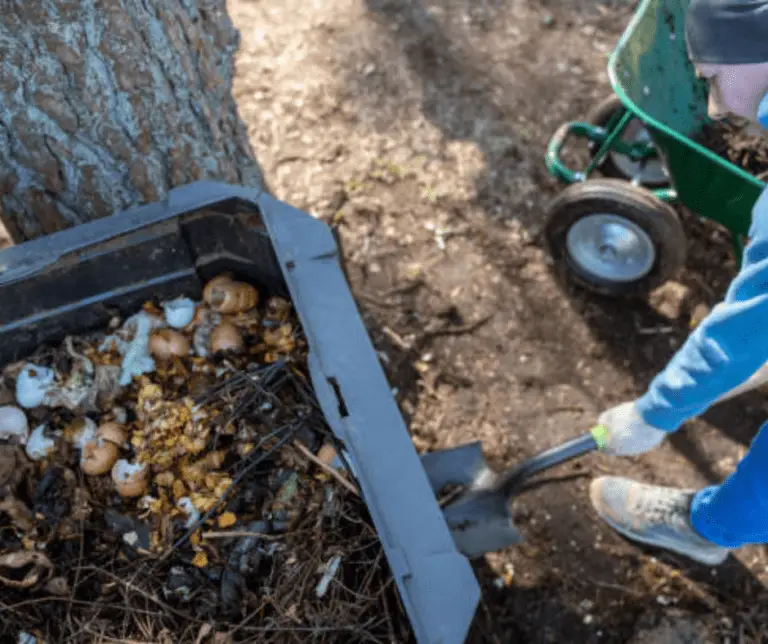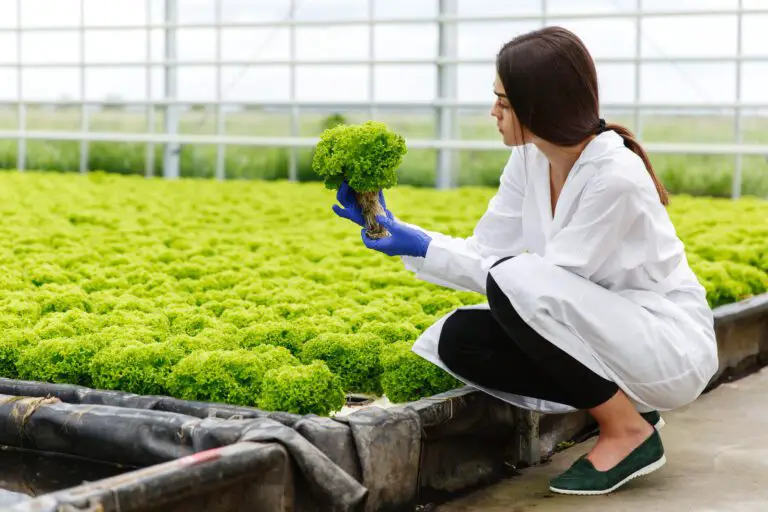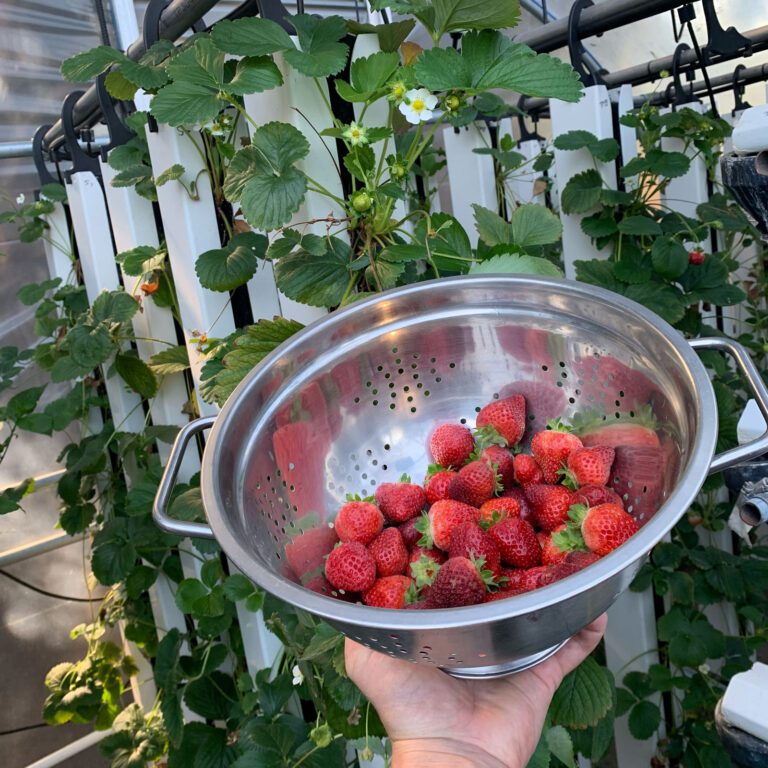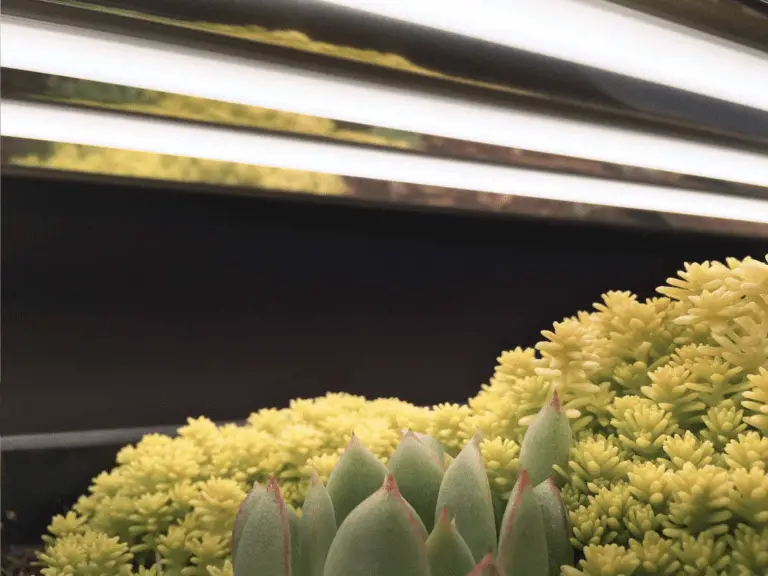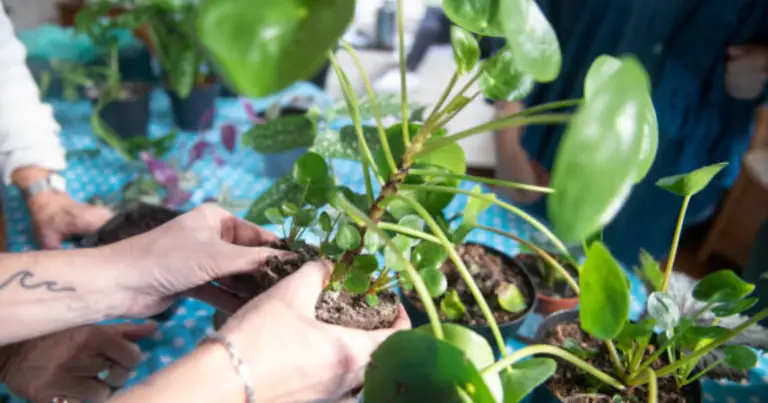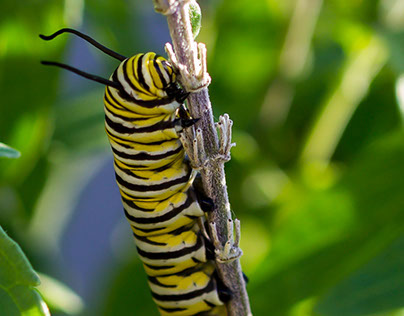How to Use Rooting Hormones on Cuttings: A Guide to Using These Products to Boost Your Plant Propagation Success
Did you know that using rooting hormones can increase your plant propagation success rate by up to 75%? Rooting hormones are essential tools for gardeners and plant enthusiasts looking to boost their success when growing plants from cuttings.
These products, available in various forms such as powders, liquids, and gels, stimulate root growth and help cuttings develop strong, healthy root systems faster than they would on their own.
In this guide, we’ll explore how to use rooting hormones effectively, from selecting the right product to applying it correctly and caring for your cuttings afterward. Whether you’re a seasoned gardener or a novice green thumb, understanding how to use rooting hormones can significantly enhance your plant propagation efforts, giving you lush, thriving plants in less time.
Ready to take your gardening skills to the next level? Let’s dive in and discover the secrets to successful plant propagation with rooting hormone!
Table of Contents
Rooting Hormones and Their Role in Plant Propagation Success
Rooting hormones play a crucial role in the success of plant propagation. These hormones are synthetic compounds that mimic natural plant hormones, such as auxins, and help stimulate root development in cuttings. By applying rooting hormones to cuttings, gardeners can significantly increase the chances of successful root formation, leading to the establishment of healthy and thriving new plants.
The use of rooting hormones has been extensively studied and proven to be a valuable tool in plant propagation. Research shows that the application of rooting hormones can enhance the percentage of successful rootings, promote faster root development, and improve the overall vigor of the propagated plants. Whether you are planning to propagate from softwood, hardwood, or semi-hardwood cuttings, selecting the appropriate rooting hormone can greatly boost your success rate. However, it is essential to understand the different types of rooting hormones available and their compatibility with various plant species and cutting types.
• Rooting hormones are synthetic compounds that mimic natural plant hormones and stimulate root development in cuttings.
• Applying rooting hormones to cuttings increases the chances of successful root formation.
• Research has shown that rooting hormones enhance the percentage of successful rootings, promote faster root development, and improve overall plant vigor.
• The success rate of propagation can be greatly boosted by selecting the appropriate rooting hormone for each plant species and cutting type.

Selecting the Right Type of Rooting Hormone for Your Cuttings
When it comes to selecting the right type of rooting hormone for your cuttings, it is important to understand the different options available and their specific purposes. Rooting hormones are classified into different types based on the active ingredient they contain. Among the most common types are auxins, cytokinins, and gibberellins. Each type has its own unique characteristics and benefits.
Auxin-based rooting hormones, such as indole-3-butyric acid (IBA) and naphthaleneacetic acid (NAA), are widely used for promoting root growth in cuttings. They stimulate the formation of adventitious roots and enhance the overall root development process. Cytokinins, on the other hand, are hormone compounds that mainly promote cell division and growth, helping to accelerate the root formation in cuttings. Gibberellins, another type of rooting hormone, are primarily involved in stimulating shoot elongation and regulating plant growth. Some rooting hormone products combine these various active ingredients to provide a more comprehensive approach to rooting.
When deciding on the right rooting hormone for your cuttings, it is essential to consider the type of plants you are propagating and their specific needs. Different plants have varying hormone requirements, and selecting the appropriate rooting hormone can make a significant difference in their success. It is also important to carefully follow the manufacturer’s instructions and recommended dosage for optimal results. By understanding the different types of rooting hormones available and selecting the right one for your specific cuttings, you can enhance the chances of successful propagation and ensure healthy root development.
When selecting the right rooting hormone for your cuttings, there are several factors to consider. Let’s break them down:
| Factor | Consideration |
| 1. Type of Plant Being Propagated | Different plants have varying rooting requirements. Some may respond better to specific types of rooting hormones. For example, softwood cuttings generally benefit from rooting hormone powder, while hardwood cuttings may do well with gel rooting hormones. |
| 2. Type of Hydroponic System | If you’re using a hydroponic system, consider the type you have in place. The choice of rooting hormone may be influenced by the specific hydroponic setup you’re using. |
| 3. Concentration of the Rooting Hormone | The concentration of the hormone matters. Too much or too little can affect root development. Follow the manufacturer’s instructions for the correct dosage based on the type of cuttings and plant species. |
| 4. Safety Considerations | Ensure that the rooting hormone you choose is safe for both the environment and yourself. Some products may contain harmful chemicals, so opt for those that are free from alcohol, dyes, or other undesirable substances. |
Remember that understanding the specific needs of your plant species and cuttings will help you make an informed decision.
Understanding the Science Behind Rooting Hormones
Rooting hormones play a crucial role in successful plant propagation by stimulating the formation of roots in cuttings. Understanding the science behind these hormones can help us make informed decisions and maximize our propagation efforts. Rooting hormones are synthetic or naturally occurring substances that mimic or enhance the activity of plant hormones involved in root development, such as auxins. Auxins are responsible for cell elongation and division, which are essential processes for root initiation and growth.
When applied to cuttings, rooting hormones increase the chances of successful rooting by stimulating the cells at the cutting’s base to differentiate into roots. They also promote the development of adventitious roots, which are roots that form from non-root tissues. This process is particularly useful for plants that are challenging to propagate from cuttings, as it can significantly improve the success rate. Research has shown that rooting hormones can enhance rooting percentages, reduce the time taken for roots to form, and improve overall root quality. Additionally, these hormones can also improve the survival and growth of newly rooted cuttings when transplanted. Understanding the science behind rooting hormones allows us to make informed choices when selecting and applying them to ensure optimal results in our plant propagation endeavors.
Preparing Your Cuttings for Rooting Hormone Application
Before applying rooting hormones to your plant cuttings, it is crucial to properly prepare them to maximize the effectiveness of the hormone treatment. By following these steps, you can ensure that your cuttings are in the best condition for successful rooting hormone application.
Firstly, it is essential to choose healthy and disease-free plant cuttings. Look for cuttings with vibrant foliage and strong stems. Avoid using cuttings with signs of disease, such as discoloration, wilting, or pest infestations, as these can negatively impact the success of rooting hormone application.
Next, carefully remove any leaves or branches from the lower portion of the cutting that will be inserted into the rooting medium. This will help to prevent rot or the development of fungal diseases. Leave a few leaves on the upper portion of the cutting to facilitate photosynthesis, but ensure that they are trimmed to reduce water loss and promote energy transfer to root development.
By properly preparing your cuttings before applying rooting hormones, you are setting the stage for successful plant propagation. With healthy, disease-free cuttings and strategic leaf removal, you are ready to move on to the next step in the process: applying the rooting hormone for optimal rooting success.
Here are the steps for preparing your cuttings for rooting hormone application:
| Step | Description |
| 1 | Select Cuttings: Choose healthy plant cuttings for propagation. These can be softwood or hardwood cuttings, depending on the plant species. |
| 2 | Remove Leaves: Trim away any excess leaves from the lower portion of the cutting. Leave a few leaves at the top for photosynthesis. |
| 3 | Cut at an Angle: Make a clean cut at the base of the cutting, preferably at a 45-degree angle. This provides a larger surface area for rooting. |
| 4 | Dip in Rooting Hormone: Mix the liquid rooting hormone with water according to the manufacturer’s instructions. Dip the cut end of the plant cutting into the solution, ensuring complete coverage. |
| 5 | Shake Off Excess: Gently shake the cutting to remove any excess liquid. |
| 6 | Plant in Growing Medium: Immediately place the treated cutting in a clean, soilless growing medium (such as perlite, vermiculite, or coconut coir). Ensure the medium is moist but not waterlogged. |
| 7 | Provide Proper Conditions: Place the cuttings in a warm, humid environment with indirect light. Maintain consistent moisture levels. |
| 8 | Monitor Progress: Check for signs of successful rooting, such as new growth and root development. |
| 9 | Transplant: Once roots have formed, transplant the rooted cuttings into individual pots or directly into the garden. |
Applying Rooting Hormones on Softwood Cuttings
Softwood cuttings are taken from the new growth of deciduous plants, typically in the spring or early summer when the stems are still young and flexible. These cuttings have a higher rate of rooting success compared to other types of cuttings. When it comes to applying rooting hormones on softwood cuttings, it is important to choose the right type of hormone and apply it correctly for optimal results.
The primary purpose of using rooting hormones on softwood cuttings is to stimulate the development of new roots. By applying a suitable rooting hormone, such as indole-3-butyric acid (IBA), to the cut ends of softwood cuttings, the hormone acts as a catalyst, promoting root growth and increasing the chances of successful propagation. It is crucial to adhere to the recommended concentrations and application methods provided by the manufacturer to ensure the hormone is applied accurately and effectively. Following the proper guidelines will help boost the rooting process and increase the likelihood of a healthy and vigorous root system forming.

Applying Rooting Hormones on Hardwood Cuttings
When it comes to applying rooting hormones on hardwood cuttings, it is important to consider the unique characteristics of this type of cutting. Hardwood cuttings are taken from the mature, woody stems of plants during their dormant season, making them less tender and more resistant to rooting compared to softwood or semi-hardwood cuttings.
To ensure successful rooting, it is recommended to apply a rooting hormone with a higher concentration of auxins, such as indole-3-butyric acid (IBA). Auxins are plant hormones that stimulate root development and help the cutting establish a new root system. Using a rooting hormone specifically formulated for hardwood cuttings will provide the necessary boost in auxin levels to encourage root growth.
To apply the rooting hormone, start by making a clean, diagonal cut at the base of the hardwood cutting. Dip the cut end into the rooting hormone powder, ensuring that the hormone covers the lower 2-3 inches of the cutting. Gently tap off any excess powder and plant the cutting into a well-draining rooting medium, ensuring that the hormone-treated portion is buried. It is also important to note that minimizing contact between the hormone powder and the foliage of the cutting will prevent any potential damage or adverse effects.

Using Rooting Hormones on Semi-Hardwood Cuttings
Semi-hardwood cuttings, which are taken from partially mature stems, can be successfully propagated using rooting hormones. The use of rooting hormones can significantly increase the chances of successful rooting and establishment of these cuttings.
When selecting a rooting hormone for semi-hardwood cuttings, it is important to choose a formulation that is specifically designed for semi-hardwood or woody plant material. This is because semi-hardwood cuttings have a tougher outer layer compared to softwood cuttings, and they require a higher concentration of rooting hormone for optimal rooting. Rooting hormone gels or powders are commonly used for semi-hardwood cuttings, as they provide a concentrated source of naturally occurring plant hormones such as auxins, which stimulate root formation.
Before applying the rooting hormone, it is crucial to ensure that the semi-hardwood cuttings are prepared properly. This includes selecting healthy and disease-free stems, making clean and angled cuts just below a node, and removing any leaves or flowers from the lower part of the cutting. Proper hygiene and sterilization should also be practiced to prevent the spread of pathogens. Once the cuttings are prepared, the base of the stem is dipped in the rooting hormone solution or powder, ensuring that the hormone covers the cut surface evenly. The excess hormone is tapped off gently, and the cutting is then planted in a suitable rooting medium.
Overall, the use of rooting hormones on semi-hardwood cuttings can greatly enhance the success rate of propagation. The hormones provide the necessary growth signals for the development of roots, allowing the cuttings to establish themselves and grow into healthy plants.
Properly Timing the Application of Rooting Hormones
Timing is crucial when it comes to the application of rooting hormones for successful plant propagation. The timing will depend on the type of cutting and the growth stage of the plant. For softwood cuttings, it is best to apply rooting hormones during the active growing season when the stems are young and flexible. This is usually in the spring or early summer.
Hardwood cuttings, on the other hand, are taken from mature, dormant stems during the late autumn or winter. Since the stems are more rigid and less susceptible to root development, applying rooting hormones at the right time is essential to encourage the formation of new roots. It is recommended to apply the hormone just before planting the cuttings to maximize effectiveness.
When working with semi-hardwood cuttings, which are taken from partially mature stems, the optimal timing for rooting hormone application falls between late summer and early fall. This timing ensures that the stems are neither too soft nor too woody, striking a balance that promotes successful rooting.
Understanding the correct timing for applying rooting hormones is essential for the success of your plant propagation efforts. By aligning the application with the growth stage and type of cutting, you provide the best opportunity for the hormone to stimulate root development. In the next sections, we will explore other important aspects to consider when using rooting hormones for various types of cuttings to further enhance your propagation success.
Ensuring Proper Hygiene and Sterilization when Using Rooting Hormones
Proper hygiene and sterilization are crucial when using rooting hormones to ensure successful plant propagation. Contaminated tools, equipment, or containers can introduce harmful pathogens that hinder the growth and development of your cuttings. To prevent any potential issues, it is essential to establish a hygienic routine before and during the application of rooting hormones.
Start by thoroughly cleaning all your gardening tools, including pruners, scissors, and propagation trays, with a bleach solution or a commercial disinfectant. This step helps eliminate any pathogens that may be present on the surfaces. It is crucial to rinse the tools well after disinfection to remove any residual chemicals that could harm your cuttings.
In addition to cleaning your tools, it is advisable to work in a clean and sterilized environment. Regularly sanitize your work area, ensuring that it is free from dirt, debris, and any remnants from previous propagations. If you are reusing containers or trays, sterilize them before use. This can be done by soaking them in a bleach solution or using a commercial sterilizing agent. Maintaining a pristine environment significantly reduces the risk of contamination and promotes healthier rooting and overall plant development.
Optimizing Environmental Conditions for Rooting Hormone Effectiveness
To ensure the effectiveness of rooting hormones, optimizing environmental conditions is crucial. These hormones work best when specific factors are taken into consideration, creating an ideal environment for successful root development. One of the key factors to consider is temperature. Maintaining the right temperature can promote the growth of roots and enhance hormone uptake. Most plants thrive in temperatures ranging from 65 to 75 degrees Fahrenheit (18 to 24 degrees Celsius). However, it’s important to note that different plants may have varying temperature requirements, so it’s essential to research their specific needs before application.
Another important consideration is humidity. High humidity levels can help prevent cuttings from drying out and promote root development. A humidity dome or a plastic bag placed over the cuttings can create a microclimate that keeps the moisture trapped around the plants. However, it’s crucial to balance humidity levels, as excessive moisture can lead to fungal diseases or rot. Monitoring humidity levels and providing adequate ventilation to prevent stagnant air is important for the health of the cuttings.
Additionally, lighting plays a significant role in rooting hormone effectiveness. While some plants may require direct sunlight, others might prefer bright but indirect light. Understanding the light requirements of your specific plant is essential. Providing the right amount and quality of light can stimulate hormone activity and support successful root development. More information on lighting requirements can be found in the section “Providing Adequate Lighting for Rooting Hormone Application.” By optimizing these environmental conditions, you can ensure the highest chances of success when using rooting hormones for plant propagation.
When it comes to optimizing environmental conditions for rooting hormone effectiveness, several factors play a crucial role. Let’s break them down in the table below:
| Factor | Description |
| Application Timing | Optimal application timing coincides with taking cuttings from parent plants. This crucial step, in conjunction with adept techniques, suitable environment conditions including humidity and temperature control, and a growth medium tailored for root development, can decidedly tip the scales in favor of success. |
| Humidity Control | Maintaining proper humidity levels is essential. High humidity helps prevent excessive water loss from cuttings and promotes root initiation. Use misting systems or humidity domes to create a humid environment. |
| Temperature Control | Rooting hormones work best within specific temperature ranges. Generally, warmer temperatures (around 70-75°F or 21-24°C) are favorable for root development. |
| Light Intensity | Provide indirect light to cuttings. Too much direct sunlight can stress the plants, while too little light may hinder rooting. |
| Growing Medium | Choose a well-draining, sterile growing medium. Common options include perlite, vermiculite, or a mix of peat and perlite. |
| Rooting Hormone Type | Select the appropriate rooting hormone formulation (e.g., talc powders, soluble tablets, or liquids). These compounds typically contain auxins like indole-3-butyric acid (IBA) or a combination of IBA and 1-naphthaleneacetic acid (NAA). |
| Rooting Environment | Maintain a warm, humid environment with consistent moisture levels. Use misting or a humidity dome to create the right conditions. |
| Monitoring Progress | Regularly check for signs of successful rooting, such as new growth and root development. Adjust environmental factors as needed. |
Remember that combining rooting hormones with optimal environmental conditions leads to high-quality, well-rooted cuttings.
Monitoring and Maintaining the Moisture Levels of Your Cuttings
Maintaining optimal moisture levels during the root development stage is crucial for successful plant propagation. The key is to strike a balance – neither too dry nor too wet – to ensure the cuttings receive the necessary hydration without risking rot or fungal diseases.
To monitor moisture levels, it is advisable to regularly check the moisture content of the rooting medium. One effective method is the finger test – simply inserting your finger into the medium to a depth of about an inch. If it feels slightly moist, then the moisture level is adequate. However, if it feels dry, it is time to water the cuttings. On the other hand, if it feels excessively wet or waterlogged, reduce the watering frequency to prevent water saturation and potential diseases. It is crucial to remember that different plant species may have varying moisture requirements, so it is essential to research specific recommendations for the plant species you are propagating.
Providing Adequate Lighting for Rooting Hormone Application
Providing adequate lighting is crucial for the successful application of rooting hormones in plant propagation. Light plays a key role in stimulating the development of new roots, promoting overall plant growth, and ensuring the long-term survival of your cuttings.
To maximize the effectiveness of rooting hormone application, it is important to provide your cuttings with the right amount and intensity of light. Ideally, you should place them in a bright location with indirect sunlight or under fluorescent grow lights. This will ensure that the cuttings receive the necessary light energy without being exposed to excessive heat or harmful UV rays.
The duration of light exposure is equally important. In general, most plants require around 12 to 16 hours of light per day for optimal growth. However, it is recommended to provide your cuttings with slightly shorter light exposure initially, as they are still in the process of establishing roots. Gradually increase the light duration as the roots develop and the plants become more robust.
Keep in mind that different plant species have varying light requirements. Some may thrive in bright, direct sunlight, while others prefer shaded or partially shaded areas. It is essential to research and understand the specific lighting needs of the plant species you are propagating to ensure successful rooting hormone application.
Overall, by providing your cuttings with adequate lighting, you create an environment that encourages healthy root development and increases the chances of successful propagation. Remember to monitor the light intensity, duration, and type to suit the needs of your cuttings, and soon you’ll celebrate your plant propagation success.
Evaluating and Celebrating Your Plant Propagation Success
Once you have successfully propagated your plants using rooting hormones, it is important to evaluate and celebrate your success. Evaluating the results will not only provide you with valuable feedback but also help you identify any areas for improvement in your propagation techniques. Take a close look at the root development of your cuttings – are they well-established and healthy? Assess the overall growth and vigor of the propagated plants compared to those that were not treated with rooting hormones.
It is also essential to celebrate your plant propagation success. Share your achievements with fellow gardening enthusiasts, whether it be through social media, local gardening clubs, or online forums. By celebrating your success, you not only inspire others to explore the world of plant propagation but also highlight the effectiveness of rooting hormones in achieving desirable outcomes. Remember to document and share your journey, including before-and-after pictures or videos, to provide visual evidence of the positive impact rooting hormones can have on plant propagation. Keep track of your successes and failures, as they will contribute to your knowledge and help you refine your techniques.
To Know More About Using Rooting Hormones on Cuttings To Boost Plant Propagation, Watch This Video!
What are rooting hormones?
Rooting hormones are substances that stimulate root growth in plant cuttings, increasing the chances of successful propagation.
How do rooting hormones contribute to plant propagation success?
Rooting hormones enhance the development of roots on plant cuttings by providing the necessary hormonal signals for root initiation and growth.
What types of rooting hormones are available?
There are different types of rooting hormones, including synthetic auxins like indole-3-butyric acid (IBA) and natural hormones like auxin and cytokinin.
How do I choose the right type of rooting hormone for my cuttings?
The choice of rooting hormone depends on the type of cutting you are propagating. Softwood cuttings typically benefit from a different rooting hormone concentration than hardwood or semi-hardwood cuttings.
Can you explain the science behind rooting hormones?
Rooting hormones work by mimicking or supplementing the natural plant hormones responsible for root development, promoting cell division, and influencing different biochemical processes in the cutting.
How should I prepare my cuttings before applying rooting hormones?
Before using rooting hormones, ensure that your cuttings are clean and healthy. Remove any leaves from the lower portion of the cutting and make a clean, angled cut just below a node.
How should I apply rooting hormones to softwood cuttings?
Dip the cut end of the softwood cutting into a rooting hormone solution, coating the lower portion of the cutting where the roots will form.
Can I use rooting hormones on hardwood cuttings?
Yes, rooting hormones can be used on hardwood cuttings, but the concentration and application method may differ. Consult the product instructions for specific guidelines.
How do I apply rooting hormones to semi-hardwood cuttings?
Similar to softwood cuttings, dip the cut end of the semi-hardwood cutting into the rooting hormone solution, ensuring thorough coverage of the lower portion.
When is the best time to apply rooting hormones?
The optimal timing of rooting hormone application depends on the plant species and the stage of growth. Consult plant-specific resources or expert advice for the most suitable timing.
Are there any precautions I should take when using rooting hormones?
It is important to maintain proper hygiene and sterilization during the propagation process to prevent the spread of diseases or contamination. Clean tools and surfaces before and after use.
How can I optimize environmental conditions for rooting hormone effectiveness?
Provide a suitable rooting medium, maintain appropriate temperature and humidity levels, and ensure good air circulation to create a favorable environment for root development.
Why is monitoring and maintaining moisture levels important for rooting hormone application?
Proper moisture levels are crucial for successful root development. Monitor and adjust moisture levels in the rooting medium to prevent drying out or excessive waterlogging.
Do cuttings require specific lighting conditions when using rooting hormones?
While lighting requirements may vary among plant species, providing adequate light, whether natural or artificial, is generally beneficial for rooting hormone application.
How do I evaluate the success of my plant propagation using rooting hormones?
Look for signs of root development, such as the appearance of new growth or an increase in plant vigor. Assess the survival rate of propagated cuttings as an indicator of success.

